In the summer of 2020, I performed homology modeling and molecular docking to predict the antimicrobial compound's potential molecular interaction with target Acinobacter baumannii enzyme chorismate-pyruvate lyase.
Welcome to the 2020 Virtual KINSC Undergraduate Student Research Symposium. Thank you for joining us to view this collection of submissions from our summer student researchers.
Biology
-

-

Mutation in ap2s1 gene has been shown to impair acoustic habituation skills in zebrafish. To further understand the role of this gene in learning behavior, I tried to investigate if ap2s1 mutation impairs vision.
-

My research project focused on the use of killed and attenuated vaccines for COVID-19. These vaccines use the actual virus that has either been killed or genetically/molecularly modified to make them safe for injection.
-
Ap2s1 is a gene that is critical for short term learning in zebrafish. This summer, my project focused on identifying new effects that ap2s1 mutations have. More specifically, I identified a difference in hunting behavior between mutant and sibling fish.
-
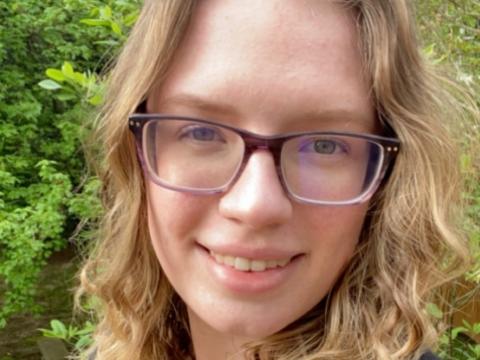
I worked on developing a pipeline to use next-generation sequencing to detect eukaryotic microbes inside ticks.
-

I resumed my previous research in creating a novel zinc-regulated gene expression system for S. suis to serve as a neutral marker that will distinguish and quantify different strains for experimental evolution experiments in the future.
-
Serotonin Receptors Modulate Decision-Making Through Subtype Specific Mechanisms, Emma Iacobucci '21
This summer Cole Roland and I continued the work of Spring 2020 Biology Superlab. We used CRISPR and drug treatments to target specific serotonin receptors to investigate the mechanism through which serotonin modulates decision-making in zebrafish.
-
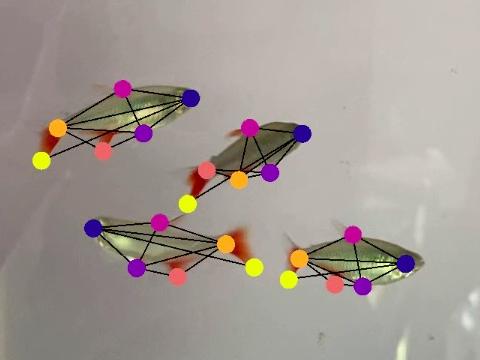
We used behavioral assays and machine learning-based tracking to investigate how a gene called Ap2s1, which we know is involved in auditory habituation learning in zebrafish, affects visually guided behavior.
-

The bacterial signaling molecule 2-heptyl-4-quinolone (HHQ) protects the phytoplankton Emiliania huxleyi from virus-induced mortality. This summer, I developed hypotheses to explain this phenomenon and methods to test my hypotheses.
-

Over the past two decades nitrate and chloride concentrations of exurban Baltimore watersheds have changed and been effected by temperature, weather, and anthropogenic interference. These trends could endanger the health of the environment and residents.
-

IL-8 (a protein) and its receptors are implicated in the onset of several diseases. My team investigated the role of IL-8 in dogs with various diseases, and we found that IL-8 receptor expression increased in many ill dogs, except for those with cancer.
-

I was able to do preliminary literature research this summer for my thesis with a team through Professor Fairman. I did a lot of research surrounding sleep and ALS, something that I have been interested in since Superlab.
Chemistry
-
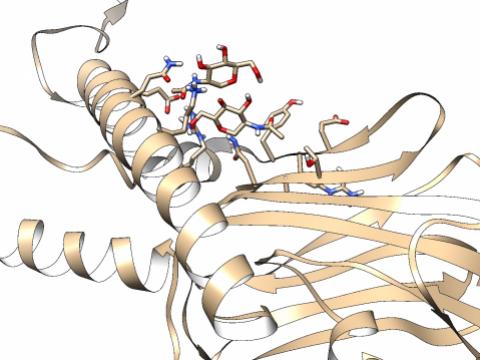
I used computational simulation to predict the interaction between alpha-synuclein and the receptor responsible for its intercellular uptake. Alpha-synuclein is a neuronal protein associated with neurological disorders such as Parkinson's Disease.
-

This summer the three of us (Annemarie Wood, Lucas Voit, and Sabine Blumenthal) worked with Chem and ES Professor Helen White to review the entry-level oceanography curriculum and create tools to improve our community's relationship to the oceans.
-

My research investigates alternative substrates for use with thin-film dielectric semiconductors. I am developing cleaning and surface modification protocols for these substrates so research labs can effectively use materials for various applications.
-

I study how acyl carrier protein (ACP), a key biosynthetic transport protein, interacts with its local environment using computer simulations. I hope to understand which physical factors drive the activity of ACP with other metabolites.
-

This presentation goes over the planned synthesis of DIGuns-qenq, a ligand based on DIGuns-penp and DIG3tren.
-
Nature serves as a wonderfully rich source of medically relevant molecules. Here, we developed an effective bioinformatic workflow for evolutionary analysis of biosynthetic gene clusters, aiding in the discovery of novel polyketide pathways and products.
-
I participated in a bioinformatics project where we looked at the biosynthesis of Vitamin B12 in several genera of bacteria. I bioinformatically cataloged genomes as producer, nonproducers, salvagers, and remodelers of vitamin B12 for analysis.
-

The goal of my research this summer was to begin the process of creating a spectroscopic map for alkynes. Over the summer I used quantum chemistry software to look at the specific frequencies of 7 alkyne containing molecules.
-
This research focuses on the search for useful chemical products produced by non-Actinobacteria through the study of the cyanobacterium Gloeocapsa sp. PCC 7428.
-

For my research, I performed molecular dynamics simulations of alpha-synuclein, a protein implicated in Parkinson's Disease, on a membrane. My goal was to establish new insights into PD by comparing the behavior of normal and PD-linked versions of aS.
-

I sought to provide a chemist's perspective on the deployment of chemical "riot control agents" (RCAs) by American law enforcement. I reviewed the scientific literature on RCAs and investigated the chemical munitions policies of 157 US police departments.
-

I worked with Ariana Sulpizio and Rebecca Koweek to research/write a review article on the importance of type II polyketide synthase acyl carrier proteins in harnessing biosynthetic processes to create pharamaceutically relevant natural products.
-

Continuing the research I conducted while in CIEE's Tropical Ecology and Conservation program in the Spring, I investigated antibiotic resistance in soil bacteria near leafcutter ant nests in Costa Rica.
-

I used molecular dynamics simulations to analyze the effect of various mutations on the ability of the E. coli acyl carrier protein to sequester molecular cargo into its hydrophobic pocket.
-
This summary I did the background research for a project I have been working on for the last ~2 years. I did literature research into the interconnection of wasp's caste system, social behavior, nutrition, reproductive system, and chemical profiles.
Computer Science
-

This paper reviews past metrics employed in performance evaluation, sheds light on the seven ideal criteria of a biometric system, and designs a scoring system that quantitatively assesses each criterion.
-

Over the summer I integrated my knowledge of both computer science and psychology, primarily through research that focused on the navigation abilities of children in virtual environments.
-
Social networks can create or strengthen a structural inequity that groups face in information access. Then, how do we differentiate between groups with varying degrees of information access, and even if we find some grouping, how do we validate it?
-
Our work involves validating thread, an algorithm for reconstructing the genomes of ancestral individuals using genetic data from contemporary individuals. By running simulations & designing trials, we managed to test assumptions & improve its accuracy.
-

This project was a collaboration between myself, Dylan Soemitro, and Professor Rajesh Kumar. We focused on improving previous solutions for authenticating and identifying users based on their mouse movement behavior.
-

I am working with Professor Dave Wonnacott in the Computer Science Department. The main focus of the research project is to create more accessible labs for students in CS106 and ECON300. We have worked on improving labs instructions, incorporate multiple.
-

My main focus during this research was to understand the bias present in physical biometrics systems, find the algorithms developed to mitigate the bias and then replicate the process to find bias and mitigate the bias in behavioral systems.
-
Our work this summer revolves around validating thread, an algorithm for reconstructing the genomes of ancestral individuals.
-

I applied generative adversarial networks (GANs) to improve the robustness of swipe authentication systems. By mixing synthetic GAN data in the training process, machine learning models are able to have higher accuracies when classifying unseen user data.
Environmental Studies
-

This summer the three of us (Annemarie Wood, Lucas Voit, and Sabine Blumenthal) worked with Chem and ES Professor Helen White to review the entry-level oceanography curriculum and create tools to improve our community's relationship to the oceans.
-

North Atlantic whales, following their zooplankton prey, stray into unprotected fishing zones and shipping routes, leading to high whale mortalities in the past 10 years. A predictive model available for commercial use can prevent whale strikes.
-

Over the past two decades nitrate and chloride concentrations of exurban Baltimore watersheds have changed and been effected by temperature, weather, and anthropogenic interference. These trends could endanger the health of the environment and residents.
-
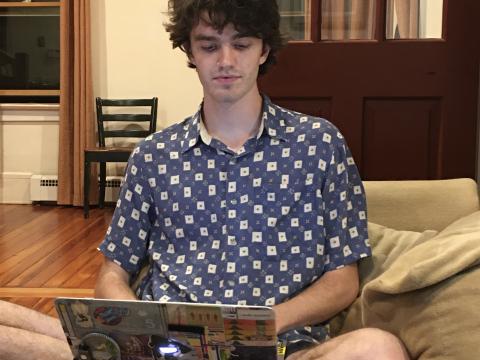
This study aimed to evaluate the use of stable isotope tracers in identifying the age and source of organic carbon within a temperate lacustrine environment. This was conducted through stable isotope (δ13C and δ15N), and radiocarbon (Δ14C) analyses.
-
This summary I did the background research for a project I have been working on for the last ~2 years. I did literature research into the interconnection of wasp's caste system, social behavior, nutrition, reproductive system, and chemical profiles.
Mathematics
-
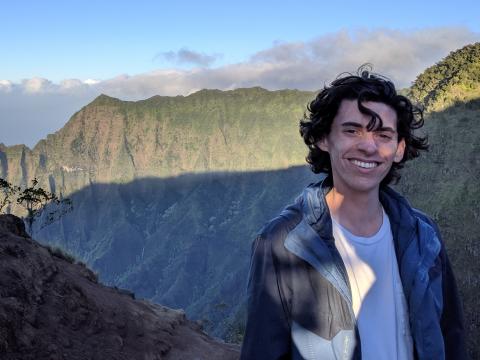
This summer we studied knot theory, more specifically quasipositive knots. This conjecture had a counterexample proving it to be false, but we showed that the counterexample wasn't valid at all!
-

We tried to understand for what values of free parameters the fine structure constant is consistent with QSO data and how it further evolves at later times for different existing models of the universe.
-
An exploration of Legendrian knots, including work on an existing conjecture and a proposed method for creating front diagrams out of knots with strongly quasipositive braid diagrams.
Physics and Astronomy
-
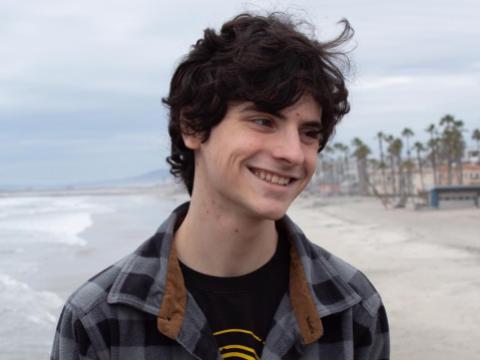
H$\alpha$ is an emission that is one of the primary indicators of Star Formation. Using citizen science to classify galactic morphology, we learn more about various properties, such as star formation or metalicities.
-

TPPS4 are self-assembling nanorods that have been shown to produce a current when illuminated by laser light. My research this summer was to further investigate this property and better understand why TPPS4 exhibits it. I also created remote labs.
-

We studied the X-ray emissions of three pulsars using the Neutron star Interior Composition Explorer (NICER) in order to analyze their pulse-to-pulse intensity modulation, or how individual pulses differ in brightness from one to the next.
-

We tried to understand for what values of free parameters the fine structure constant is consistent with QSO data and how it further evolves at later times for different existing models of the universe.
-
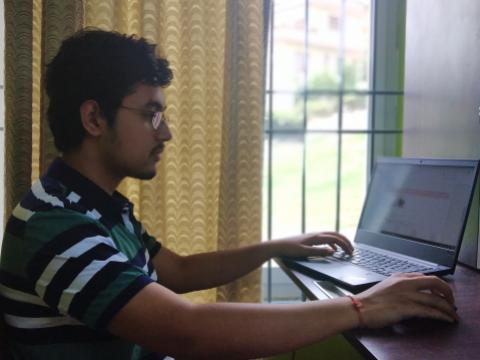
Neutral atomic hydrogen (HI) gas reservoir within galaxies can form molecular hydrogen (H2) which can initiate the process of star formation. We explore HI rich but low star-forming galaxies to answer why these galaxies are unable to convert HI to stars.
-

We used data from the NICER x-ray telescope on the ISS in order to create a model for Earth's atmosphere, and specifically a model that we can use to locate the ISS in its orbit as it watches a bright source emerge from behind the rocky Earth.
-

We used data from the NICER x-ray telescope on the ISS in order to create a model for Earth's atmosphere, and specifically a model that we can use to locate the ISS in it's orbit as it watches a bright source emerge from behind the rocky Earth.
-

We point out that there's an error in stating that the "Earth terms" in the timing residuals are in phase across all the pulsars. We define two types of the "Earth terms" and prove that the Earth terms with antenna functions are generally out of phase.
-

We use X-Ray observations from NICER on PSR B1937+21 to attempt to detect red noise. We found that using current data alone we cannot make a detection, but with 8x the length of our data set, we can successfully make a detection.
-

We studied the X-ray emissions of three pulsars using the Neutron star Interior Composition Explorer (NICER) in order to analyze their pulse-to-pulse intensity modulation, or how individual pulses differ in brightness from one to the next.
-

North Atlantic whales, following their zooplankton prey, stray into unprotected fishing zones and shipping routes, leading to high whale mortalities in the past 10 years. A predictive model available for commercial use can prevent whale strikes.
-

We searched for transitions of HCN and HCO+ in planetary nebulae in order to further understand their molecular content. Counter to previous models of molecular depletion, our work suggests a relative lack of correlation between abundance and nebular age.
-

I developed a numerical simulation code for the temperature and current of porphyrin nanowires after ion bombardment. I also coded a virtual version of an optics lab for remote instruction during the COVID-19 pandemic and to supplement online instruction.
-

We gauge the ability of galaxy surveys to test axion dark matter models. We simulate universes with axion dark matter and observe them with hypothetical analogs of real surveys. This lets us preview an axion dark matter universe as it would appear to us.
-

Chameleon Gravity Models are a dark energy alternative in which low mass galaxies in low density regions of the Universe experience additional gravitational forces. MaNGA Data reveals the offset of systematic shifts between the stellar and gas kinematics.
-

We weren't able to get into the lab for the past summer, but I still successfully understood the data analysis part of the experiment, designed a rough experimental procedure for a heating test to our pump, and on my way designing a lay within the cell.
-

Our research with the Spotted Lanternfly Nymphs had two main pathways: the first was trying to get the nymphs to display desired responses of jumping and dropping, and the second was to analyze their self-righting biomechanics.
Psychology
-

We've embarked on various projects, and I think our first project was most important. It dealt with the act of estimating numbers of the total number of dots on a dot-field. Our starting question was: after how many dots do our estimation skills worsen?
-

Over the summer I integrated my knowledge of both computer science and psychology, primarily through research that focused on the navigation abilities of children in virtual environments.
-

I have had the pleasure to engage in work that examines the role that linguistic cues, such as word labeling, have in aiding infants in categorizing objects in the external world.
